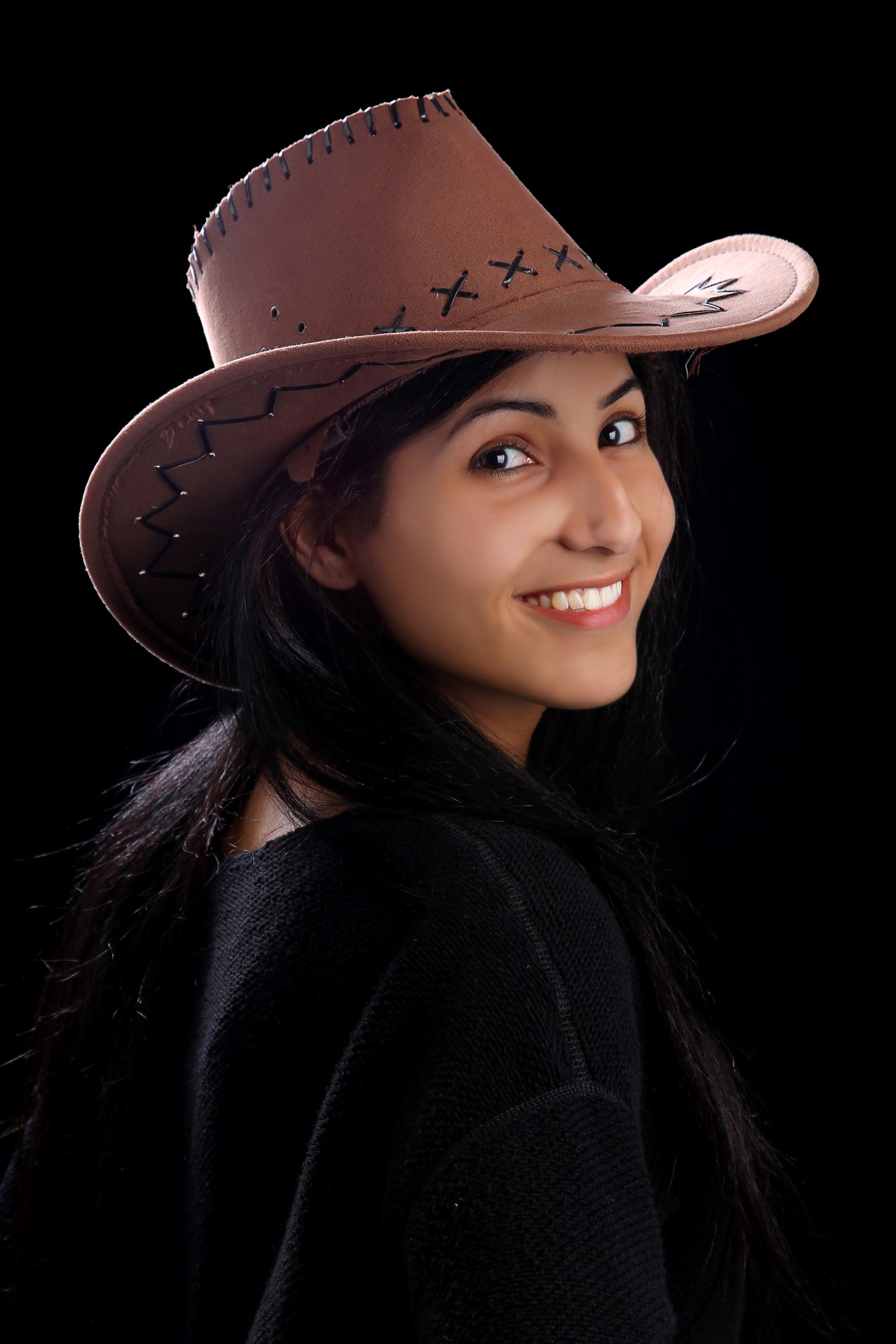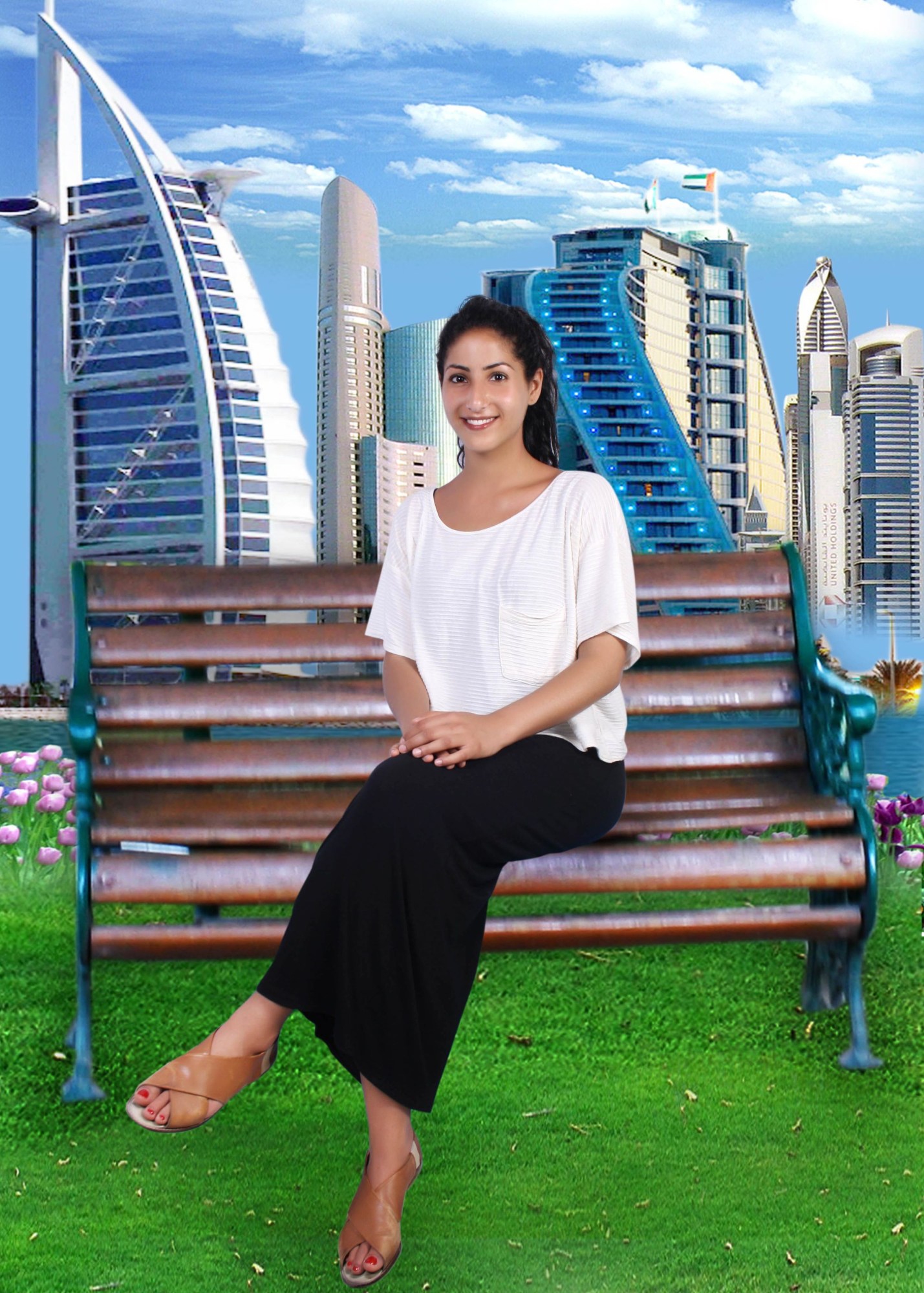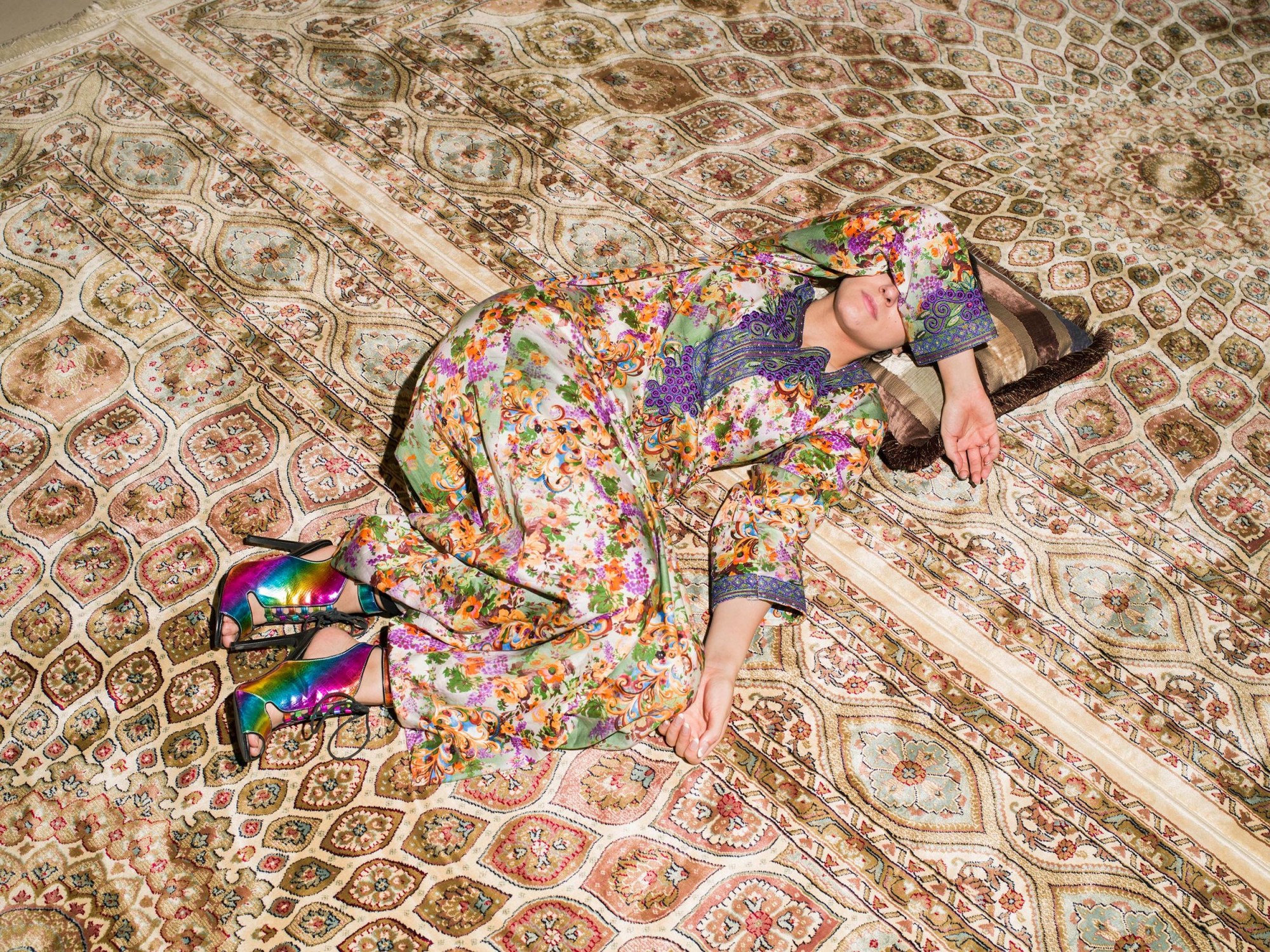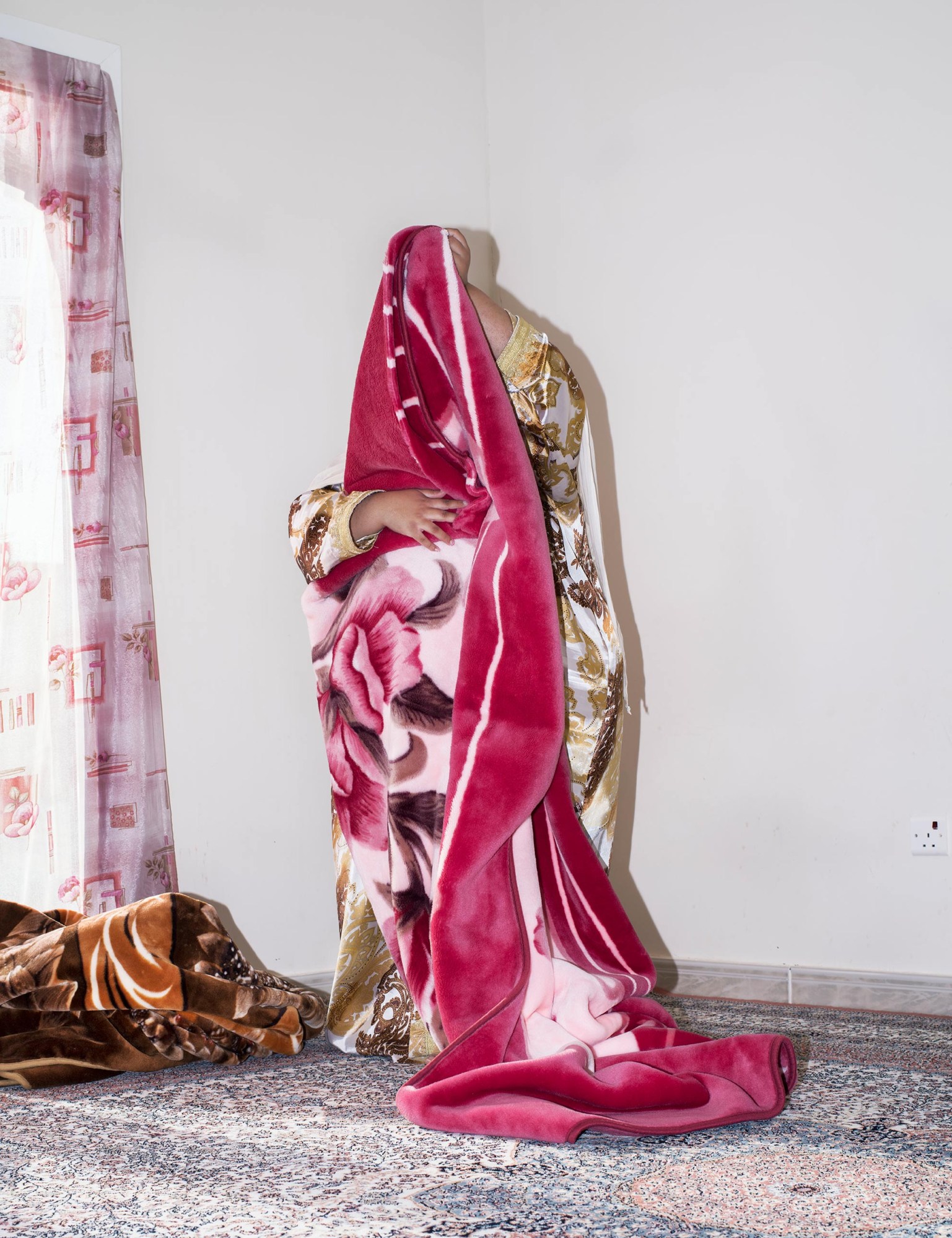Earlier this year, Farah Al Qasimi put out a call on Instagram to find her doppelgänger. She needed a lookalike to participate in a performance piece as part of her new solo show in New York. Farah, who is a recent graduate from the MFA program at the Yale School of Art, is wearing an eye patch in the profile image on her Instagram page and I wonder if it has anything to do with the fact that the “doppelgänger” she found doesn’t look much like her.
“She really doesn’t look that much like me,” Farah agrees. “She’s very beautiful. It’s very flattering to me. But it’s not necessarily important that she look like me, it’s important that she’s somebody who might be mistaken for me if they knew my name but nothing else.” The woman Farah found is Indian-American, while Farah has an Emirati father and a Lebanese-American mother.

One of the main concerns Farah explores in More Good News, currently on view at Helena Anrather gallery in Chinatown, is the flattening of identities that many people of color experienced after 9/11. The show consists mainly of large photographs of men who, in Farah’s words, “all of a sudden, are looked at by people who are trying to determine whether or not they’re a threat to them.”
“I was thinking about my own family, and watching the men in my life go through this almost emasculating that happens when you move from a place where you blend in to a place where you experience being racialized,” she continues. She references her great uncle, who is Lebanese and owns a bodega on the Upper West Side. The men in many of her images are family members, often photographed in their homes. The portraits are intimate: in one, her father sits on a sofa framed by upholstery and curtains that match his brown thawb. In another, her friend Ghaith sits on his bed with his eyes closed, wearing all white. “I wanted to think about how to use a camera in a different way, and make tender and protective portraits,” she says. “But also have some that highlight this feeling of violence and hyper visibility.”

For the a performance piece, Farah’s doppelgänger acted out a series of actions as Farah. Meanwhile, Farah herself “was controlling a projection onto the windows that talked about my own experience of being under surveillance.”
Farah’s father was in the United Nations and later became the Secretary General of the Gulf Cooperation Council. “He’s had a life in foreign policy and so our family has been eavesdropped on for many years,” she says. “My parents warned me all the time, Don’t talk about this, don’t talk about that.” The family’s mail, she says, always arrives with an NSA sticker around it. Their baggage is carefully checked at airports. A week and a half before the show opening, a phone call she made was disrupted by a strange echo effect.
“There’s this glitch that often happens in my phone calls where the call is being recorded and the other side is played back to me on a loop,” she explains. “It happened before the show, so I displayed part of it. I recorded it on a camera. The performance is meant to add this context to the photographs.”

While the show focuses primarily on men, Farah’s new book of work, Body Shop, contains photographs mostly of women. She says this gender division was not intentional, but the book was partly a project to capture the women she knows in the Emirates. “It was a collaborative conversation born out of a desire to just have fun together,” she says. The images represent several different but related projects: some are portraits of friends and family at home, the cover image (above) is from a large commission about labor, and there is a series of portraits of Farah herself.
For that project, Farah went to local portrait studios across the Emirates and asked photographers to take her photo with only one instruction: “make me look beautiful.”

“People were generally kind of baffled by my request, because I think they’re used to being told, ‘I want to look like this, I want to look like that,’” she explains. “One guy got really mad because I wasn’t wearing makeup and said, ‘It’s ok, I’ll put some on in Photoshop.’” Another styled her in a cowboy hat. “I’m really interested in the people who accessorized me. These people are also looking at me and thinking, ‘Where’s she from? What does she want to look like?’”
Nearly every photographer, Farah says, whitened her skin in the final image. “It’s just a thing that all photographers do there. It’s a given. Most people made my teeth white and my cheeks redder. Basically like descriptions of Snow White.” In addition to the belief that paler skin looks more Western and is more desirable, “In the UAE, ideas of paleness are related to status and labor,” explains Farah. “They say that women who are darker have been outside in the sun, because they’ve had to work. It’s a shared belief that is profited off.”

Farah’s book is an antidote to that draining of color. There are images of hot pink mirrored beauty salons, bright peeling walls, vividly patterned carpets, technicolor wheatpaste advertisements, her friends and family dressed in eye-popping clothes.
“I consider the whitening of skin that’s not supposed to be white a deadening or a quieting,” Farah says. “I find a lot of beauty in disquieting. When I moved to the US, a lot of women asked me about the women in my community with assumptions that they were quiet and docile and shy. I think that there’s a real vibrancy that gets overlooked.”

She talks about one photograph in particular of her friend folding a blanket. “I love it so much because she’s shrouded in color. You can’t see her face at all but it expresses so much what it is like to be in her company. She is a colorful person, she lives in a colorful world. You don’t need to see the feeling in her eyes to know that.”
“I don’t think that anybody owes all of themselves to the world,” she adds. “I think with photography there’s often this conversation about visibility being the highest goal. I like to find beauty in other places.”
“Body Shop” is available now through Dashwood Books . “More Good News” in on show at Helena Anrather gallery in New York through December 22.
